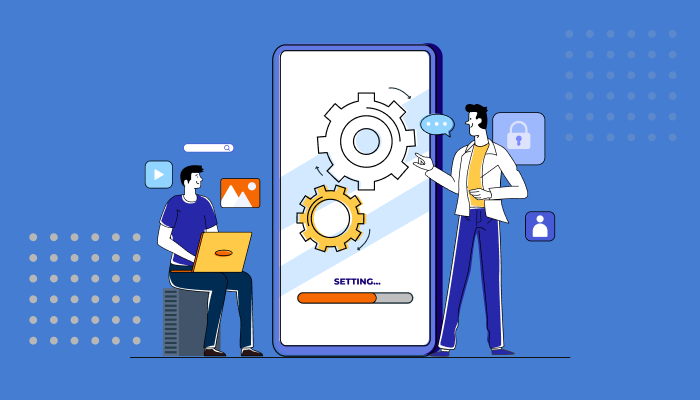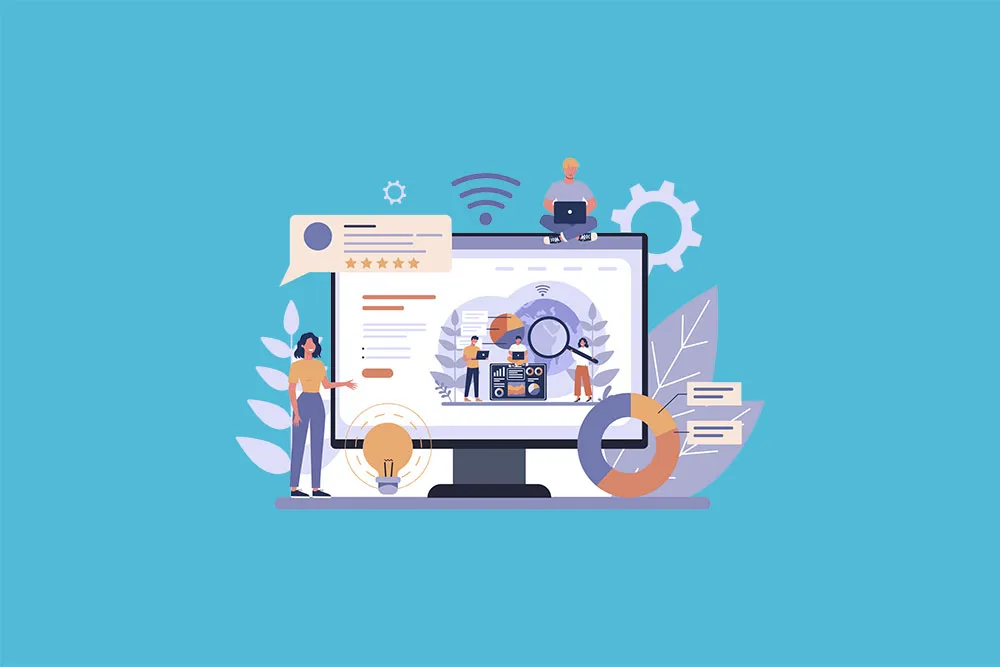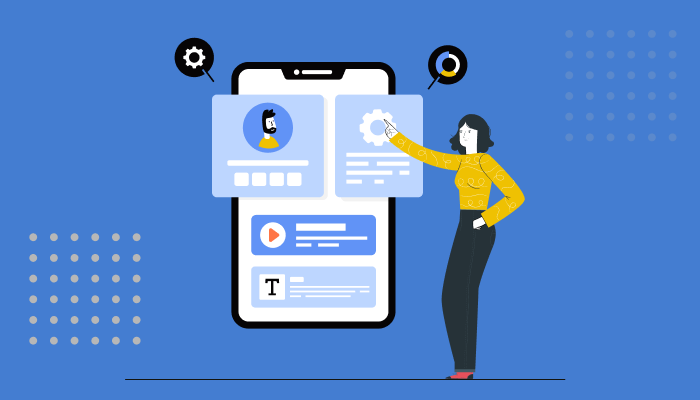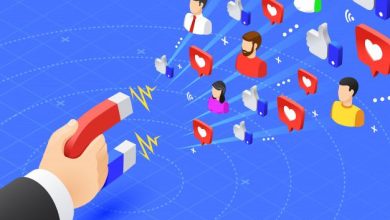The Power of Personalization Tools for Business Growth

In today’s hyper-connected digital landscape, the one-size-fits-all approach is obsolete. Consumers, users, and even employees expect experiences tailored precisely to their individual needs, preferences, and behaviors. This demand for personalization has propelled a massive shift in how businesses interact with their audience. No longer a mere luxury, personalization has become a critical strategic imperative, directly impacting customer loyalty, conversion rates, and overall business growth. At the heart of this transformation lies a diverse array of personalization tools, each designed to empower organizations to deliver bespoke journeys that resonate deeply with their target audience.
This extensive guide will delve into the multifaceted world of personalization, exploring its profound impact, the various tools that facilitate it, and best practices for implementation. We’ll uncover how these sophisticated technologies analyze data, predict behavior, and adapt content, products, and services in real-time to create truly unique and engaging interactions.
The Irrefutable Case for Personalization

Why has personalization become such a dominant force? The reasons are compelling and rooted in fundamental human psychology and modern consumer expectations.
A. Enhanced Customer Experience: When an experience feels tailor-made, it fosters a sense of being understood and valued. This leads to increased satisfaction, deeper engagement, and a more positive perception of the brand. Think about receiving product recommendations perfectly aligned with your past purchases, or content suggestions that genuinely interest you. This creates a seamless and enjoyable journey.
B. Increased Conversion Rates: Personalized recommendations, targeted promotions, and customized calls to action significantly increase the likelihood of a desired outcome, whether it’s a purchase, a sign-up, or a download. By presenting relevant options at the right time, businesses reduce friction in the conversion funnel.
C. Boosted Customer Loyalty and Retention: Satisfied customers are loyal customers. When businesses consistently deliver personalized experiences, they build strong relationships, leading to repeat business and higher customer lifetime value (CLV). Personalized communication makes customers feel remembered and appreciated, reducing churn.
D. Improved Marketing ROI: By focusing efforts on segments and individuals most likely to respond, personalization optimizes marketing spend. Campaigns become more efficient and effective, leading to a better return on investment. Wasted ad impressions are minimized, and resources are allocated more intelligently.
E. Richer Data Insights: Implementing personalization tools often involves collecting and analyzing vast amounts of data. This data, when properly utilized, provides invaluable insights into customer behavior, preferences, and trends, informing future strategies and product development. It allows businesses to understand their audience at a granular level.
F. Competitive Advantage: In crowded markets, personalization can be a key differentiator. Businesses that excel at delivering personalized experiences stand out from competitors who still employ generic approaches, attracting and retaining a larger share of the market.
G. Reduced Churn: When customers feel their needs are being met and their preferences are understood, they are less likely to seek alternatives. Proactive personalization can address potential pain points before they lead to customer dissatisfaction and eventual churn.
Unpacking the Personalization Tool Ecosystem
The landscape of personalization tools is vast and constantly evolving. These tools leverage various technologies, including artificial intelligence (AI), machine learning (ML), big data analytics, and behavioral tracking, to deliver their capabilities. They can be broadly categorized based on their primary function and the types of experiences they personalize.
1. Customer Relationship Management (CRM) Systems
At the foundational level, CRM systems are indispensable for personalization. While not solely personalization tools, they serve as the central repository for customer data, enabling a holistic view of each individual.
A. Key Features: Contact management, sales force automation, customer service management, marketing automation.
B. How they Enable Personalization: CRMs consolidate customer interactions, purchase history, communication preferences, and demographics. This unified data allows businesses to segment audiences, tailor communications, and provide personalized support. For example, a CRM can flag a customer’s recent interaction with support, allowing a sales representative to acknowledge and address it in subsequent conversations.
C. Leading Examples: Salesforce, HubSpot CRM, Microsoft Dynamics 365.
2. Marketing Automation Platforms
These platforms automate repetitive marketing tasks and personalize communication across various channels.
A. Key Features: Email marketing, lead nurturing, landing page creation, segmentation, workflow automation, lead scoring.
B. How they Enable Personalization: Marketing automation platforms use data from CRMs and other sources to trigger personalized emails, deliver targeted content, and guide leads through customized journeys based on their behavior and demographic data. For instance, if a user downloads an e-book on a specific topic, the platform can automatically enroll them in a drip campaign related to that topic.
C. Leading Examples: Marketo Engage (Adobe), Pardot (Salesforce), ActiveCampaign, Mailchimp.
3. E-commerce Personalization Platforms
Specifically designed for online retailers, these tools focus on optimizing the shopping experience.
A. Key Features: Product recommendations (collaborative filtering, content-based, hybrid), personalized search results, dynamic pricing, individualized promotions, tailored content on product pages.
B. How they Enable Personalization: These platforms analyze Browse history, purchase patterns, search queries, and real-time behavior to suggest relevant products, offer customized discounts, and display content that encourages conversion. An example is Amazon’s “Customers who bought this also bought…” feature.
C. Leading Examples: Optimizely (formerly Episerver), Bloomreach, Personalization Engine (Salesforce Commerce Cloud), Dynamic Yield.
4. Content Personalization Platforms
These tools focus on delivering relevant and engaging content to individual users on websites, apps, and other digital touchpoints.
A. Key Features: Dynamic content serving, A/B testing, multivariate testing, content recommendations, user segmentation for content delivery.
B. How they Enable Personalization: By understanding user preferences, past interactions, and implicit signals, these platforms serve up articles, videos, images, and other content pieces that are most likely to resonate with the individual. This can range from personalized news feeds to tailored educational resources.
C. Leading Examples: Acquia Personalization (formerly Monsido), BrightEdge, Quantum Metric.
5. Website and App Personalization Tools
These tools dynamically modify the user interface and experience of a website or mobile application based on individual user behavior and characteristics.
A. Key Features: A/B testing for UI elements, dynamic calls to action, personalized navigation paths, real-time content adaptation based on user journey, geotargeting.
B. How they Enable Personalization: They allow businesses to present different versions of a webpage, app screen, or specific elements (like banners or forms) to different users, optimizing for engagement and conversion based on individual profiles. For example, a returning visitor might see a pop-up with a special offer, while a new visitor sees a general welcome message.
C. Leading Examples: Google Optimize (legacy, but principles are embedded in Google Analytics 4), VWO, AB Tasty, Optimizely Web Experimentation.
6. Customer Data Platforms (CDPs)
CDPs are relatively newer but rapidly gaining prominence. They consolidate and unify customer data from various sources into a single, comprehensive customer profile.
A. Key Features: Data collection (first-party, second-party, third-party), data unification and identity resolution, segmentation, audience activation, real-time profile updates.
B. How they Enable Personalization: Unlike CRMs which focus on managing customer interactions, CDPs create a persistent, unified customer profile by stitching together data from marketing automation, e-commerce, customer service, web analytics, and offline sources. This “golden record” enables hyper-personalization across all channels and systems. For example, a CDP can identify a customer who interacted with a chat bot, viewed a specific product, and then abandoned their cart, allowing for a highly targeted follow-up.
C. Leading Examples: Segment (Twilio), Tealium, Treasure Data, ActionIQ.
7. Recommendation Engines
Often integrated into e-commerce and content platforms, these are specialized AI-powered systems.
A. Key Features: Collaborative filtering (users with similar tastes), content-based filtering (items similar to what user liked), hybrid approaches, real-time recommendations.
B. How they Enable Personalization: They analyze historical user behavior (purchases, views, ratings) and item attributes to suggest products, content, or services that a user is likely to be interested in. This is the technology behind “Recommended for you” sections on streaming services or online stores.
C. Leading Examples: Built-in features of e-commerce platforms, specialized AI/ML services from cloud providers (AWS Personalize, Google Cloud Recommendations AI).
Strategic Implementation

Acquiring the right tools is only half the battle. Effective personalization requires a strategic approach that encompasses data management, clear objectives, and continuous optimization.
1. Data is Your Foundation
Personalization thrives on data. The more comprehensive and accurate your data, the better your personalization efforts will be.
A. Collect Relevant Data: Focus on first-party data (data you collect directly from your customers), as it’s the most valuable. This includes purchase history, Browse behavior, demographic information (with consent), and interactions with your brand across all channels.
B. Ensure Data Quality: Garbage in, garbage out. Implement processes to clean, de-duplicate, and validate your data to ensure its accuracy and reliability.
C. Unify Customer Profiles: This is where CDPs shine. Break down data silos and create a single, unified view of each customer. This “golden record” enables consistent personalization across all touchpoints.
D. Respect Privacy: Adhere to data privacy regulations (e.g., GDPR, CCPA). Be transparent with users about data collection and provide clear opt-out options. Trust is paramount.
2. Define Clear Objectives
Before implementing any personalization initiative, define what you aim to achieve.
A. Increase Conversion Rates: Are you looking to boost sales, sign-ups, or lead generation?
B. Improve Customer Retention: Is your goal to reduce churn and foster loyalty?
C. Enhance Customer Satisfaction: Do you want to create a more enjoyable and seamless experience?
D. Boost Average Order Value (AOV): Are you aiming to encourage customers to buy more per transaction?
E. Set Measurable KPIs: Quantify your objectives with Key Performance Indicators (KPIs) that allow you to track progress (e.g., conversion rate increase, churn rate decrease, AOV increase).
3. Segment Your Audience (Initially)
While hyper-personalization aims for one-to-one experiences, starting with broad segmentation can be effective.
A. Demographic Segmentation: Age, gender, location, income.
B. Psychographic Segmentation: Interests, values, lifestyle.
C. Behavioral Segmentation: Purchase history, website interactions, product views, abandoned carts.
D. Lifecycle Segmentation: New customers, returning customers, loyal customers, at-risk customers.
As your data matures and tools become more sophisticated, you can move towards micro-segmentation and then true one-to-one personalization.
4. Start Small and Iterate
Don’t try to personalize everything at once. Begin with a specific area or campaign.
A. Identify High-Impact Areas: Where can personalization have the most significant immediate impact? (e.g., product recommendations on the homepage, personalized email subject lines).
B. Run A/B Tests: Continuously test different personalized experiences against control groups to understand what works best. This iterative process allows for continuous improvement.
C. Analyze Results and Optimize: Regularly review your KPIs and adjust your strategies based on performance. Personalization is an ongoing journey, not a destination.
5. Embrace AI and Machine Learning
These technologies are the backbone of advanced personalization.
A. Predictive Analytics: Use AI to predict future customer behavior, such as likelihood to churn or next best offer.
B. Dynamic Content Optimization: Leverage ML to automatically serve the most effective content variation to each user in real-time.
C. Real-time Personalization: Enable your systems to adapt content and offers instantly as users interact with your platforms.
6. Cross-Channel Consistency
A truly personalized experience spans all touchpoints – website, email, mobile app, social media, and even offline interactions.
A. Unified Customer View: Ensure that data collected in one channel is accessible and informs personalization efforts in others.
B. Consistent Messaging: Maintain a consistent brand voice and messaging across all personalized communications.
C. Seamless Handoffs: If a customer starts an interaction on one channel (e.g., website chat) and continues on another (e.g., phone call), ensure the context is maintained.
The Future of Personalization
The trajectory of personalization is towards even greater sophistication and ethical considerations.
A. Hyper-Personalization and One-to-One Marketing: The goal is to deliver truly unique experiences to every individual, at every touchpoint, in real-time.
B. Proactive Personalization: Moving beyond reacting to user behavior, systems will increasingly anticipate needs and offer solutions before the user even expresses them.
C. Voice and Conversational AI: Personalization will extend more deeply into voice interfaces and chatbots, creating highly natural and intuitive interactions.
D. Ethical AI and Transparency: As personalization becomes more pervasive, ethical considerations around data privacy, algorithmic bias, and transparency will become paramount. Businesses will need to build trust by being clear about how data is used and giving users control.
E. Integration of Offline and Online Data: The lines between digital and physical experiences will blur further, allowing for personalized experiences that span both realms (e.g., personalized in-store recommendations based on online Browse).
Overcoming Challenges in Personalization
While the benefits are clear, implementing personalization isn’t without its hurdles.
A. Data Silos: Data residing in disparate systems prevents a unified customer view. CDPs are designed to address this.
B. Lack of Data Quality: Inaccurate or incomplete data leads to poor personalization. Robust data governance is crucial.
C. Integration Complexity: Connecting various tools and ensuring seamless data flow can be technically challenging.
D. Resource Constraints: Implementing and managing personalization efforts requires skilled personnel and ongoing investment.
E. Privacy Concerns: Balancing personalization with user privacy is a delicate act. Transparency and user control are key.
F. Measuring ROI: Attributing specific business outcomes directly to personalization efforts can sometimes be complex, requiring sophisticated analytics.
Conclusion
Personalizing experiences is no longer a luxury; it’s a fundamental expectation in today’s digital world. By leveraging the right blend of personalization tools, from foundational CRM systems and marketing automation platforms to advanced e-commerce engines and CDPs, businesses can unlock unparalleled opportunities for growth, loyalty, and customer satisfaction. The journey towards true one-to-one marketing is complex, demanding a strategic approach that prioritizes data quality, clear objectives, continuous optimization, and an unwavering commitment to ethical data practices. As technology continues to evolve, the ability to craft unique, relevant, and engaging customer journeys will remain a cornerstone of success for any forward-thinking organization. Embrace personalization, and you’ll not only meet but exceed the expectations of your audience, forging deeper connections and driving sustainable value.


